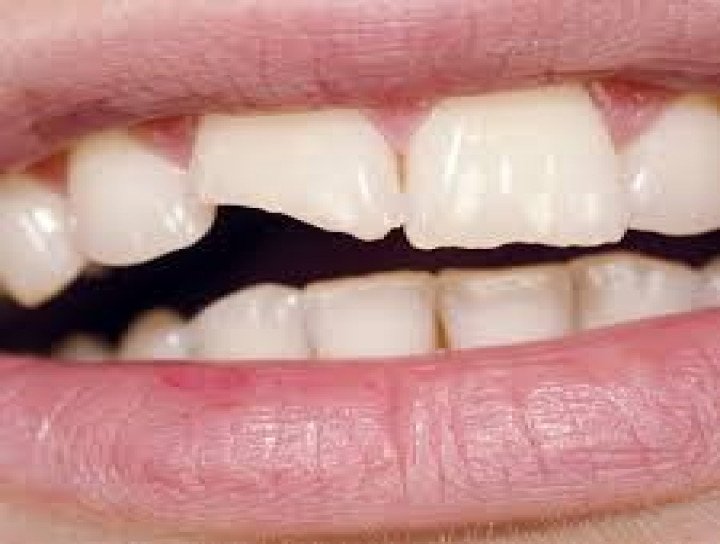
Presently, the classifications of traumatic dental injuries (TDIs) are varied, resulting in misinterpretations by lay people and practitioners alike. Further, such classifications are complex and incomprehensible, in addition to being non-exhaustive encompassing all sets of TDIs. This leads to incorrect diagnosis and inaccurate treatment designs for the patients, necessitating the need for a simpler, standardized form of classification. This assumes more importance for conservative dentists, who have to diagnose and suggest tooth-specific, site-specific and need oriented treatments.
Moreover, close analysis reveals that classifications placed more emphasis on traumatic dental injuries in general, giving little consideration to vertical tooth fractures. There is thus, a need for reappraisal of tooth fractures. Any such classification should be applicable to both primary and permanent dentition, and based on tooth fractures in both the horizontal and vertical planes.
To address the deficiencies in the present classification paradigm, few standardised classifications are proposed. Their nature, along with the corresponding treatment options are given below.
Type I: Fractures of anterior teeth in the horizontal or transverse plane
• Div. 1: Fractures of the tooth crown
A (Fracture in the incisal one-third up to the junction of the incisal and middle third of the crown, either partial or complete): Treatment of such cases generally consists of only smoothing any rough, jagged tooth structures if only the enamel is involved; in cases where the dentine is exposed, the exposed part should be covered with calcium hydroxide to enhance reparative dentine formation. Calcium hydroxide and the sandwich technique utilizing glass ionomer cement are seen as a better alternative for cases where sensitivity to hot/cold has developed.
B (Fracture in the middle one-third up to the junction of the middle and cervical third of the crown, either partial or complete): The objective of treatment in such cases is to maintain the vitality of the pulp as far as possible, and direct pulp capping or pulpotomy is the treatment of choice, although sometimes apexogenesis or apexification may be an option.
C (Fracture in the cervical one-third up to the cervical line of the crown, either partial or complete): Treatment should involve post-core restoration after the completion of endodontic therapy.
• Div. 2: Fractures of the tooth root
A (Fracture in the cervical one-third up to the junction of the cervical and middle third of the root): If the coronal segment is fractured above the level of the alveolar bone, then a lost tooth can be restored with a prosthetic crown after some gingival recontouring and endodontic therapy. However, if the coronal segments are splinted properly, healing may also occur. If the length of the apical segment is sufficient to maintain the crown:root ratio, forced eruption of the segment may be carried out for restoration.
B (Fracture in the middle one-third up to the junction of the middle and apical third of the root): The wide fractured foramen can be plugged using long-term treatment with calcium hydroxide or one-visit apexification with MTA and endodontic therapy for the coronal fragment only, unless periapical pathosis is seen in the apical fragment.
C (Fracture in the apical one-third of the root): In the case of favorable prognosis, No treatment is needed for such fractures, and only observation is required. Otherwise, an average treatment period of 4-6 weeks for apical-third root fracture using a removable splint.
• Div. 3 (Fractures involving both the crown and root or at multiple sites): If location of the fracture line is located in the incisal third or middle third of the crown and the apical third of the root, prognosis may be favorable, whereas if it involves the cervical or middle third of the root along with the crown, then the prognosis may be unfavorable. Outcome was favorable in a case, after repositioning of the fracture fragments by splinting for 3 months, followed by root canal therapy for the coronal fragment 18 months after apexification, and restoration of the crown with acid-etching composite resin 1 week thereafter.
Type II: Fractures of the posterior teeth in the horizontal or transverse plane
• Div. 1: Fractures involving the cusp/cusps
A (Fracture involving one cusp): These cases can be restored with cast inlay/onlay, direct or indirect composite, CAD-CAM generated porcelain restorations.
B (Fracture involving two cusps): Treatment involves cast inlay/onlay, direct or indirect composite, CAD-CAM generated inlays or onlays, pin-retained amalgams, and bonded amalgam.
C (Fracture involving three cusps): Treatment can be achieved with cast onlays, CAD/CAM generated onlays, or pin-retained amalgams/bonded amalgam, followed by cast crowns or ceramic crowns.
D (Fracture involving four or more cusps): These need to be restored with full cast/ceramic crowns. A judicious decision regarding root canal therapy should be made in all cases before the final restoration.
• Div. 2 (Fracture of crown en masse): The prognosis is generally poor and such teeth are usually extracted.
• Div. 3 (Fracture involving root or roots): Resection of one root or, if required, hemisection, is the treatment of choice.
Type III: Fractures of teeth in the vertical or longitudinal plane
• Div. 1 (Incomplete tooth fractures or cracked tooth Syndrome): Both bonded and non-bonded (pin-retained) complex amalgam restorations were effective for eliminating chewing pain in molars with incomplete fractures. In another case, an orthodontic steel band was used to stabilize a cracked tooth, which was later reinforced with a composite restoration and finally with a full cast crown.
• Div. 2: Vertical fractures involving tooth crowns
A (Fracture in an anterior or posterior tooth where the fracture line passes buccolingually in the crown): If the pulp is not exposed and the fracture fragments are not completely separated, the fragments may be bonded using adhesive resins or flowable composites; if the fragments are widely separated, the tooth may be stabilized using an orthodontic band and then restored with composites. If there is pulp exposure, root canal treatment is done after banding, and then the tooth is restored permanently using crowns.
B (Fracture in an anterior or posterior tooth where the fracture line passes mesio-distally through the crown): In posterior teeth, the separated fragments are stabilized by orthodontic bands, root canal treatment is carried out, and the tooth restored with a composite restoration followed by placement of a full ceramic crown. In anterior teeth, in most cases, if the mobile fragment cannot be reattached, it is removed, the root canal is treated, and the tooth is restored with a post and core restoration, followed by a full crown.
• Div. 3: Vertical fractures involving tooth roots
A (Fracture in an anterior or posterior tooth where the fracture line passes buccolingually in both the crown and root, or in the root only): In mandibular molars, root bicuspidization or hemisection is the treatment of choice, and in maxillary molars, root resection can be done depending on the root that is fractured. The rest of the crown can be restored with a full crown.
B (Fracture in an anterior or posterior tooth where the fracture line passes mesio-distally through both the crown and root, or the root only): If the fracture fragments are separated completely, they are removed, and the rest of the tooth is built up with metal-reinforced glass ionomer cement or composite and restored with a crown.
Type IV (Oblique fractures involving the crown, root or both in anterior or posterior teeth): The fragments may sometimes be held only by periodontal ligament fibers, and hence removal of the coronal fragment with orthodontic extrusion of the apical fragment may be required for restoration purposes.
Finally, though conservation should be attempted as far as possible by applying modern conservative techniques, extraction followed by an implant procedure and/or prosthetic replacement may be considered in case conservation is not possible.


No Any Replies to “A PROPOSAL FOR CLASSIFICATION OF TOOTH FRACTURES BASED ON TREATMENT NEED”
Leave a Reply